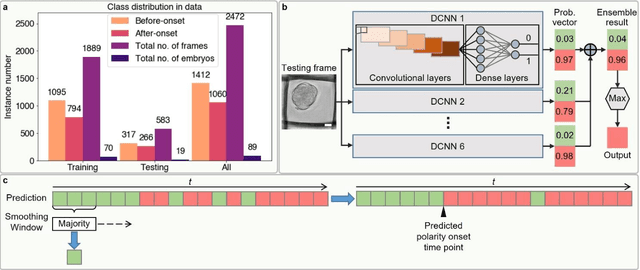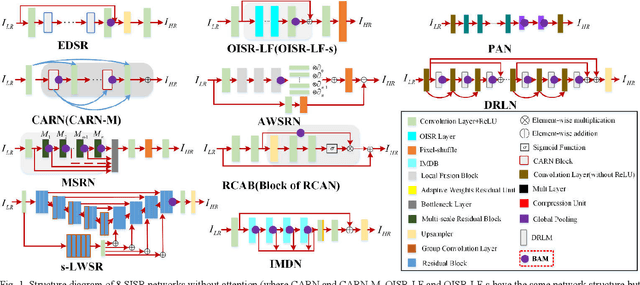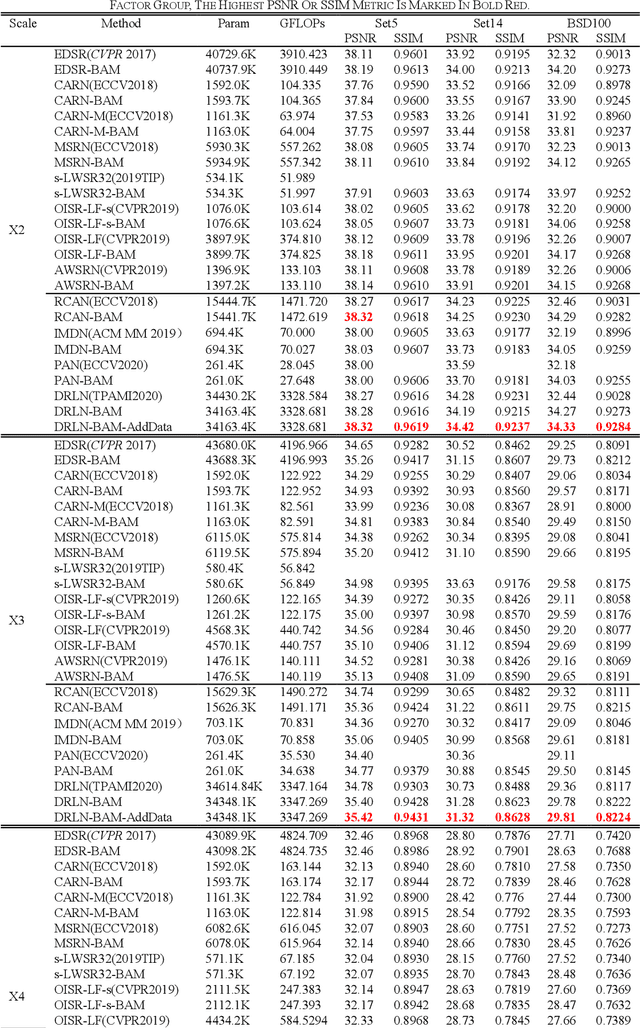Cheng Shen
Zixiaofan
Optimal Corpus Aware Training for Neural Machine Translation
Aug 07, 2025Abstract:Corpus Aware Training (CAT) leverages valuable corpus metadata during training by injecting corpus information into each training example, and has been found effective in the literature, commonly known as the "tagging" approach. Models trained with CAT inherently learn the quality, domain and nuance between corpora directly from data, and can easily switch to different inference behavior. To achieve the best evaluation, CAT models pre-define a group of high quality data before training starts which can be error-prone and inefficient. In this work, we propose Optimal Corpus Aware Training (OCAT), which fine-tunes a CAT pre-trained model by freezing most of the model parameters and only tuning small set of corpus-related parameters. We show that OCAT is lightweight, resilient to overfitting, and effective in boosting model accuracy. We use WMT23 English to Chinese and English to German translation tasks as our test ground and show +3.6 and +1.8 chrF improvement, respectively, over vanilla training. Furthermore, our approach is on-par or slightly better than other state-of-the-art fine-tuning techniques while being less sensitive to hyperparameter settings.
Conformal Segmentation in Industrial Surface Defect Detection with Statistical Guarantees
Apr 24, 2025Abstract:In industrial settings, surface defects on steel can significantly compromise its service life and elevate potential safety risks. Traditional defect detection methods predominantly rely on manual inspection, which suffers from low efficiency and high costs. Although automated defect detection approaches based on Convolutional Neural Networks(e.g., Mask R-CNN) have advanced rapidly, their reliability remains challenged due to data annotation uncertainties during deep model training and overfitting issues. These limitations may lead to detection deviations when processing the given new test samples, rendering automated detection processes unreliable. To address this challenge, we first evaluate the detection model's practical performance through calibration data that satisfies the independent and identically distributed (i.i.d) condition with test data. Specifically, we define a loss function for each calibration sample to quantify detection error rates, such as the complement of recall rate and false discovery rate. Subsequently, we derive a statistically rigorous threshold based on a user-defined risk level to identify high-probability defective pixels in test images, thereby constructing prediction sets (e.g., defect regions). This methodology ensures that the expected error rate (mean error rate) on the test set remains strictly bounced by the predefined risk level. Additionally, we observe a negative correlation between the average prediction set size and the risk level on the test set, establishing a statistically rigorous metric for assessing detection model uncertainty. Furthermore, our study demonstrates robust and efficient control over the expected test set error rate across varying calibration-to-test partitioning ratios, validating the method's adaptability and operational effectiveness.
High-resolution, large field-of-view label-free imaging via aberration-corrected, closed-form complex field reconstruction
Sep 01, 2023Abstract:Computational imaging methods empower modern microscopy with the ability of producing high-resolution, large field-of-view, aberration-free images. One of the dominant computational label-free imaging methods, Fourier ptychographic microscopy (FPM), effectively increases the spatial-bandwidth product of conventional microscopy by using multiple tilted illuminations to achieve high-throughput imaging. However, its iterative reconstruction method is prone to parameter selection, can be computationally expensive and tends to fail under excessive aberrations. Recently, spatial Kramers-Kronig methods show it is possible to analytically reconstruct complex field but lacks the ability of correcting aberrations or providing extended resolution enhancement. Here, we present a closed-form method, termed APIC, which weds the strengths of both methods. A new analytical phase retrieval framework is established in APIC, which demonstrates, for the first time, the feasibility of analytically reconstructing the complex field associated with darkfield measurements. In addition, APIC can analytically retrieve complex aberrations of an imaging system with no additional hardware. By avoiding iterative algorithms, APIC requires no human designed convergence metric and always obtains a closed-form complex field solution. The faithfulness and correctness of APIC's reconstruction are guaranteed due to its analytical nature. We experimentally demonstrate that APIC gives correct reconstruction result while FPM fails to do so when constrained to the same number of measurements. Meanwhile, APIC achieves 2.8 times faster computation using image tile size of 256 (length-wise). We also demonstrate APIC is unprecedentedly robust against aberrations compared to FPM - APIC is capable of addressing aberration whose maximal phase difference exceeds 3.8${\pi}$ when using a NA 0.25 objective in experiment.
Error Performance of Rectangular Pulse-shaped OTFS with Practical Receivers
Nov 07, 2022Abstract:In this letter, we investigate error performance of rectangular pulse-shaped orthogonal time frequency space (OTFS) modulation with a practical receiver. Specifically, we consider an essential bandpass filter at receiver RF front-end, which has been ignored in existing works. We analyse the effect of rectangular pulses on practical OTFS receiver performance, and derive the exact forms of interference in delay-Doppler (DD) domain. We demonstrate that the transmitted information symbols in certain regions of the DD domain are severely contaminated. As a result, there is an error floor in the receiver error performance, which needs to be addressed for such OTFS waveform in practical systems.
Stain-free Detection of Embryo Polarization using Deep Learning
Nov 08, 2021



Abstract:Polarization of the mammalian embryo at the right developmental time is critical for its development to term and would be valuable in assessing the potential of human embryos. However, tracking polarization requires invasive fluorescence staining, impermissible in the in vitro fertilization clinic. Here, we report the use of artificial intelligence to detect polarization from unstained time-lapse movies of mouse embryos. We assembled a dataset of bright-field movie frames from 8-cell-stage embryos, side-by-side with corresponding images of fluorescent markers of cell polarization. We then used an ensemble learning model to detect whether any bright-field frame showed an embryo before or after onset of polarization. Our resulting model has an accuracy of 85% for detecting polarization, significantly outperforming human volunteers trained on the same data (61% accuracy). We discovered that our self-learning model focuses upon the angle between cells as one known cue for compaction, which precedes polarization, but it outperforms the use of this cue alone. By compressing three-dimensional time-lapsed image data into two-dimensions, we are able to reduce data to an easily manageable size for deep learning processing. In conclusion, we describe a method for detecting a key developmental feature of embryo development that avoids clinically impermissible fluorescence staining.
BAM: A Lightweight and Efficient Balanced Attention Mechanism for Single Image Super Resolution
Apr 15, 2021



Abstract:Single image super-resolution (SISR) is one of the most challenging problems in the field of computer vision. Among the deep convolutional neural network based methods, attention mechanism has shown the enormous potential. However, due to the diverse network architectures, there is a lack of a universal attention mechanism for the SISR task. In this paper, we propose a lightweight and efficient Balanced Attention Mechanism (BAM), which can be generally applicable for different SISR networks. It consists of Avgpool Channel Attention Module (ACAM) and Maxpool Spatial Attention Module (MSAM). These two modules are connected in parallel to minimize the error accumulation and the crosstalk. To reduce the undesirable effect of redundant information on the attention generation, we only apply Avgpool for channel attention because Maxpool could pick up the illusive extreme points in the feature map across the spatial dimensions, and we only apply Maxpool for spatial attention because the useful features along the channel dimension usually exist in the form of maximum values for SISR task. To verify the efficiency and robustness of BAM, we apply it to 12 state-of-the-art SISR networks, among which eight were without attention thus we plug BAM in and four were with attention thus we replace its original attention module with BAM. We experiment on Set5, Set14 and BSD100 benchmark datasets with the scale factor of x2 , x3 and x4 . The results demonstrate that BAM can generally improve the network performance. Moreover, we conduct the ablation experiments to prove the minimalism of BAM. Our results show that the parallel structure of BAM can better balance channel and spatial attentions, thus outperforming the series structure of prior Convolutional Block Attention Module (CBAM).
 Add to Chrome
Add to Chrome Add to Firefox
Add to Firefox Add to Edge
Add to Edge